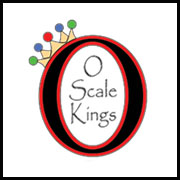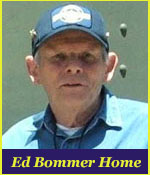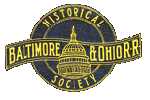Ed Bommer
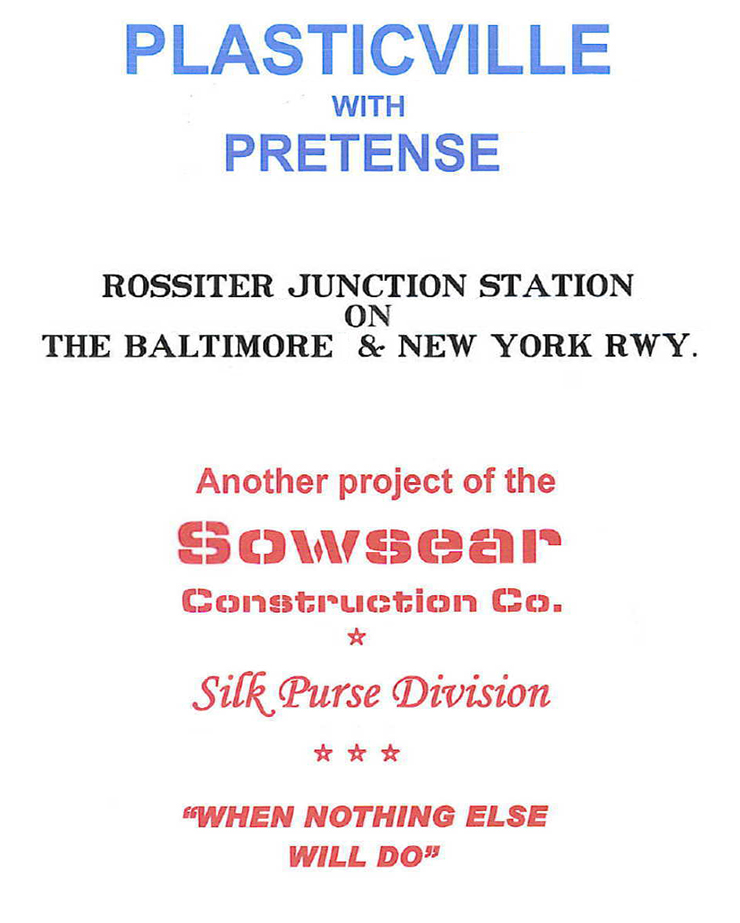
A presentation made at an Indian Nations Division, Mid-Continent Region NMRA Meeting at Tulsa OK in April, 2012.
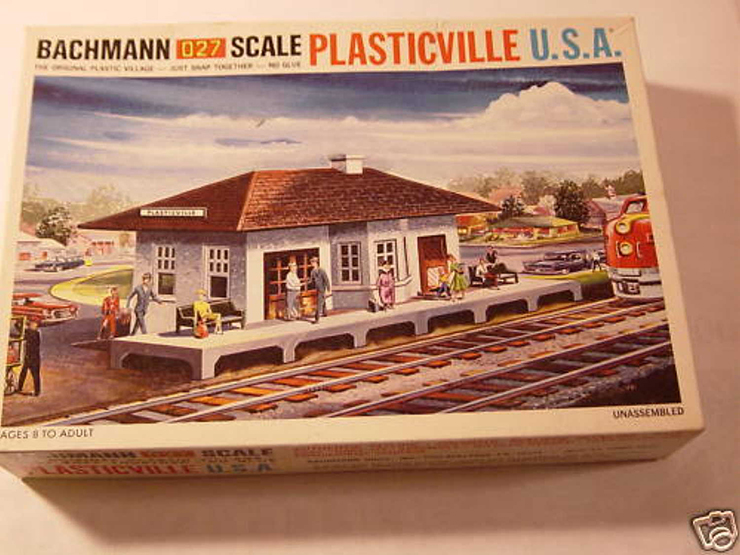 Plasticville made a large number of various structures intended for the toy train market of Lionel and American Flyer from the 1950s onward. While most of the snap together kits are obviously too small for O scale or imaginative clones of each other, some of them are in 1:48 scale. A few others are reasonably close.
Plasticville made a large number of various structures intended for the toy train market of Lionel and American Flyer from the 1950s onward. While most of the snap together kits are obviously too small for O scale or imaginative clones of each other, some of them are in 1:48 scale. A few others are reasonably close.
With a bit of work, they can be made into something beyond what is in the picture on the box cover. This little depot is among them.
Here, we will see what happened to it after serving several years on a Lionel Christmas time set up.
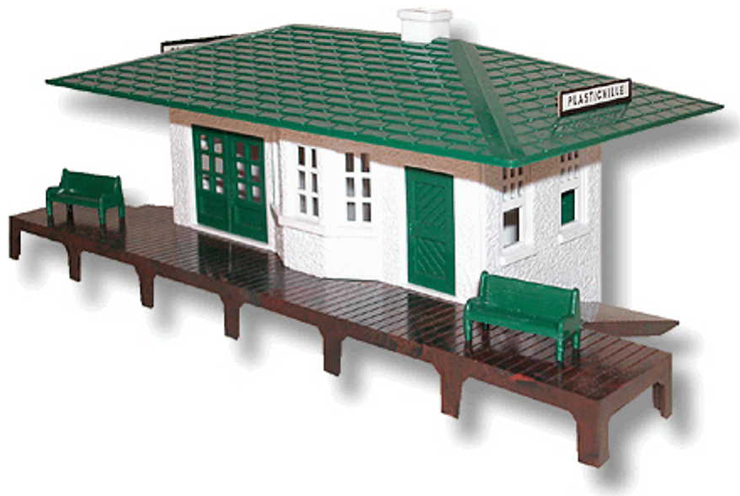 This is it, as built from the box. It has a semi-raised platform, intended to be used with Lionel track and passenger cars.
This is it, as built from the box. It has a semi-raised platform, intended to be used with Lionel track and passenger cars.
While the platform doors are lined up for it, the back door of the station stands at the same height, well up from the ground. A little snap-in step is provided. It’s often lost after the first assembly.
The benches while a bit klunky, go well with the station. They will be used in the rebuilding.
The stucco finish of the walls is quite good as is the overhang of the roof on all four sides. The doors scale at 6’ in height. A bit short, but they will do for this as a scenery item. It’s not intended to be a contest quality piece!
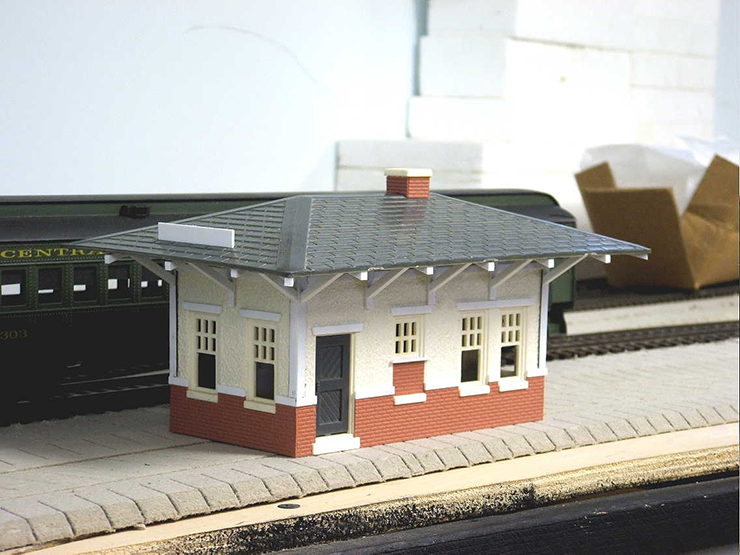 To get the station to sit all at one level, the bottom edges were cut off just below the door sills for a scale 6” high (1/8”) step. Those pieces were in turn glued to the top edge of each wall panel, thereby raising the roof.
To get the station to sit all at one level, the bottom edges were cut off just below the door sills for a scale 6” high (1/8”) step. Those pieces were in turn glued to the top edge of each wall panel, thereby raising the roof.
Styrene sheet brick was cut and fitted at the window sills. One back window seen here was shortened for a “rest room.”
Rafters and roof braces were made from styrene strip stock.
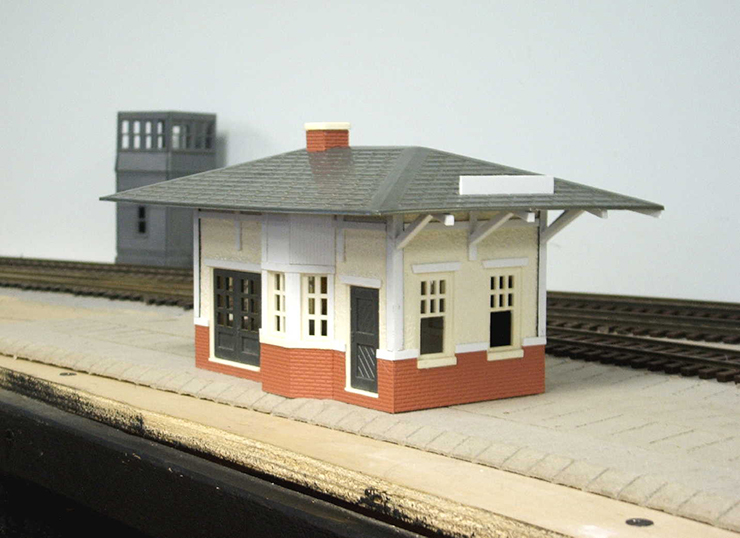 Here is the track-side view of the depot. It will be set into a brick platform which will meet the bottoms of the doors on this side. The station, while small, has a baggage/express office on this end, as well as the ticket agent’s booth and waiting room. It will be detailed and finished to look like a suburban depot used in the northeastern US area.
Here is the track-side view of the depot. It will be set into a brick platform which will meet the bottoms of the doors on this side. The station, while small, has a baggage/express office on this end, as well as the ticket agent’s booth and waiting room. It will be detailed and finished to look like a suburban depot used in the northeastern US area.
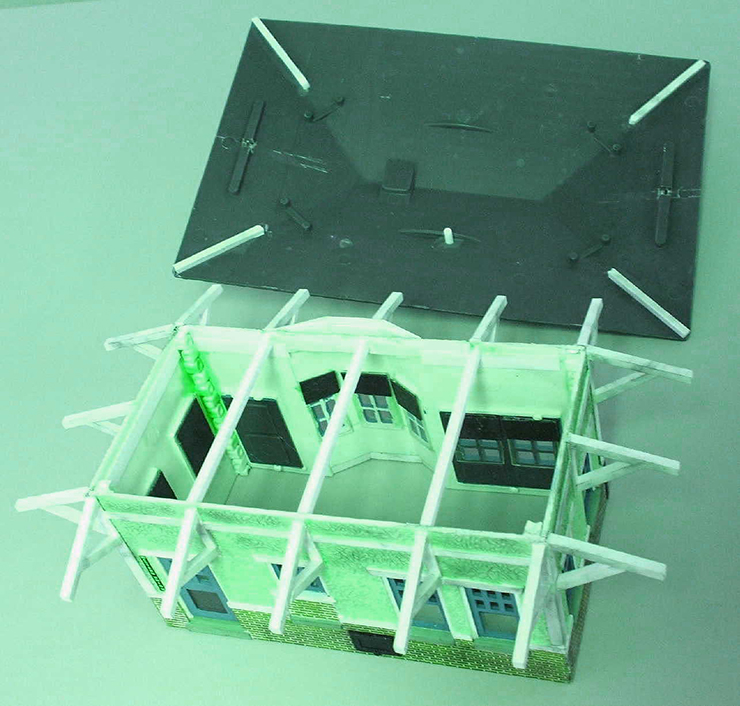 Here is how the roof braces and rafters were attached to the four walls. The jacks, or corner rafters, were cemented to the roof. A girt of styrene strips cover the joints between the walls and their cut off bottoms now attached to the tops.
Here is how the roof braces and rafters were attached to the four walls. The jacks, or corner rafters, were cemented to the roof. A girt of styrene strips cover the joints between the walls and their cut off bottoms now attached to the tops.
The upper walls were painted a light buff color with cheap, acrylic artist’s paint. White was used for the lintels, window and door framing, with a medium gray for the window sills. Medium green was used on window frames and doors, with Pullman green inset panels. The back door did not have a window, so one was cut in to match the front doors. Styrene caps were applied to the stucco corners. The trackside corners were given black metal caps over the brick work. In case the agent got in too much of a hurry and might damage it with the baggage cart.
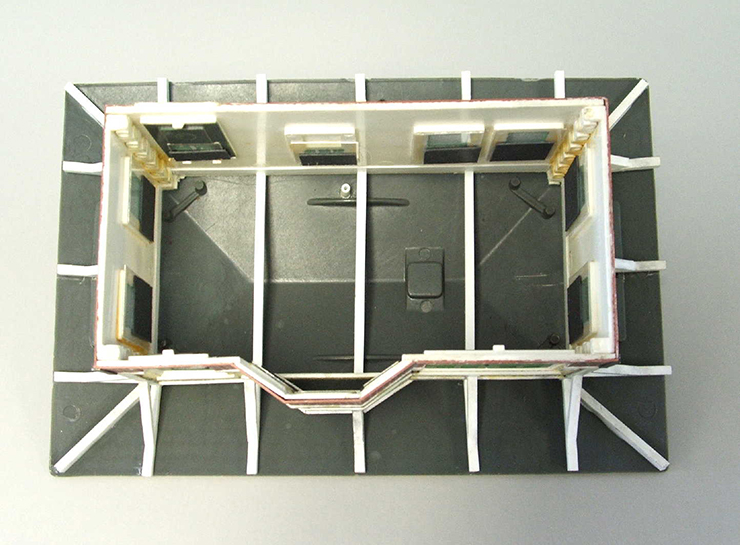 An upside-down view, showing how the roof fits the station body. The black window shades (a WW II leftover from when east coast businesses and buildings were required to have ‘black-out’ shades drawn down on all windows at night), were cut from art paper.
An upside-down view, showing how the roof fits the station body. The black window shades (a WW II leftover from when east coast businesses and buildings were required to have ‘black-out’ shades drawn down on all windows at night), were cut from art paper.
Indeed, German U-boats were not that far off the entry to New York Harbor at the time and could possibly see lights along the shoreline!
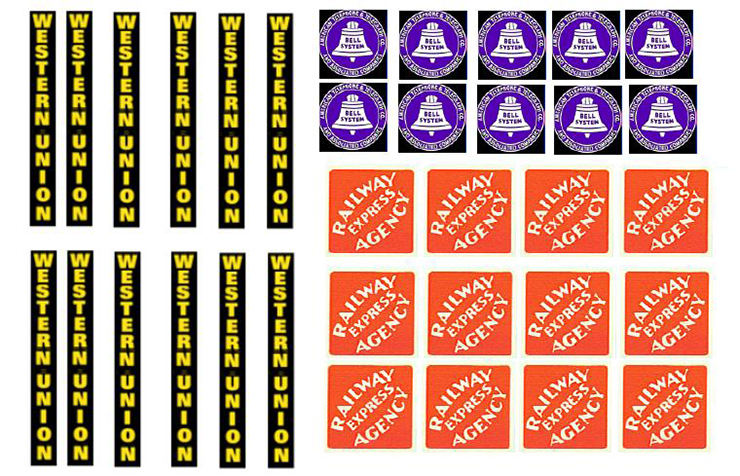 A station needs signs! Here are period signs for Western Union, Bell Telephone and Railway Express of the 1940s and 50s.
A station needs signs! Here are period signs for Western Union, Bell Telephone and Railway Express of the 1940s and 50s.

The station’s name signs are computer made, using a B&O font for station lettering.
It was named for Neville Rossiter of Perth, West Australia a good friend and mate, whose Bay Ridge Harbor layout is well known for its excellence in detail and operation. Below is a “walkabout” at the depot lettered, detailed and weathered.
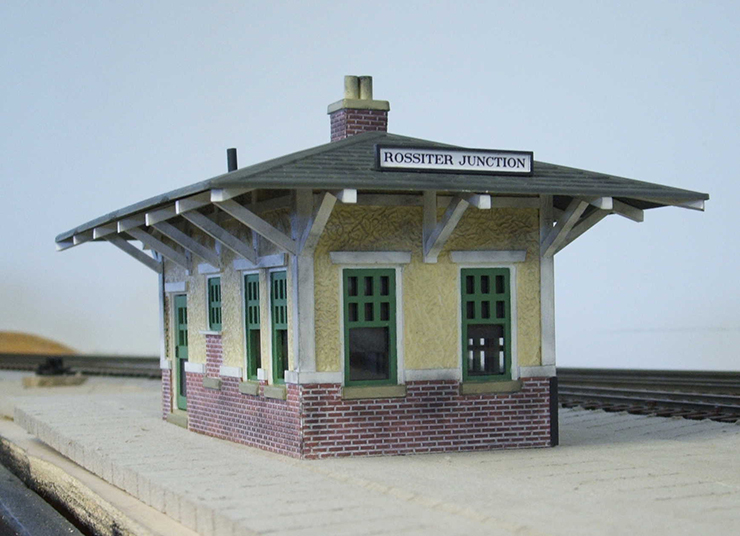
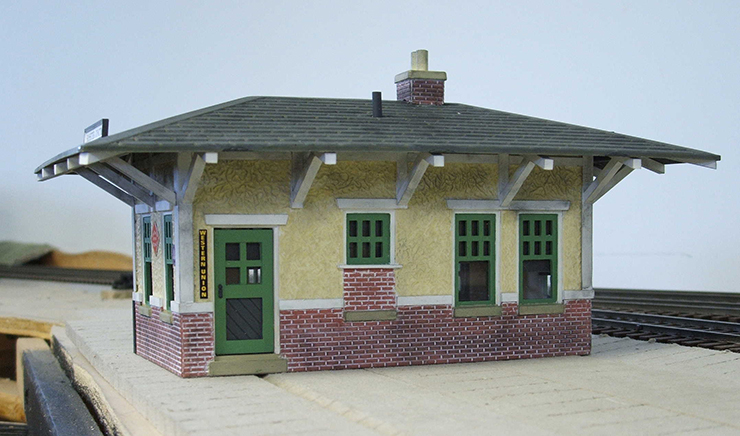
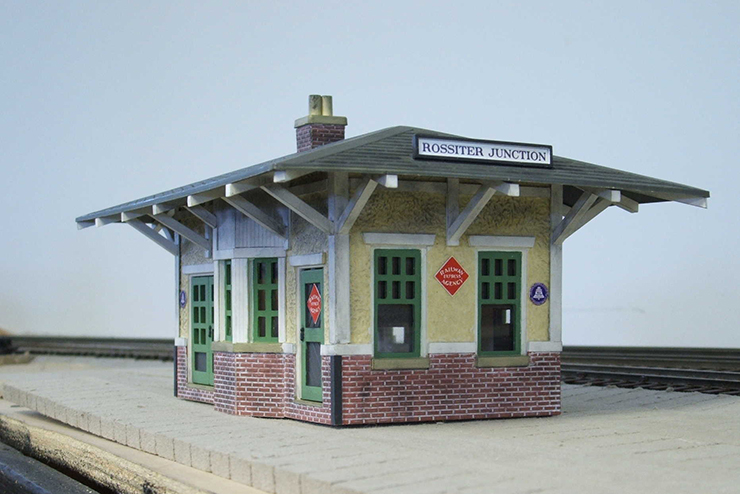
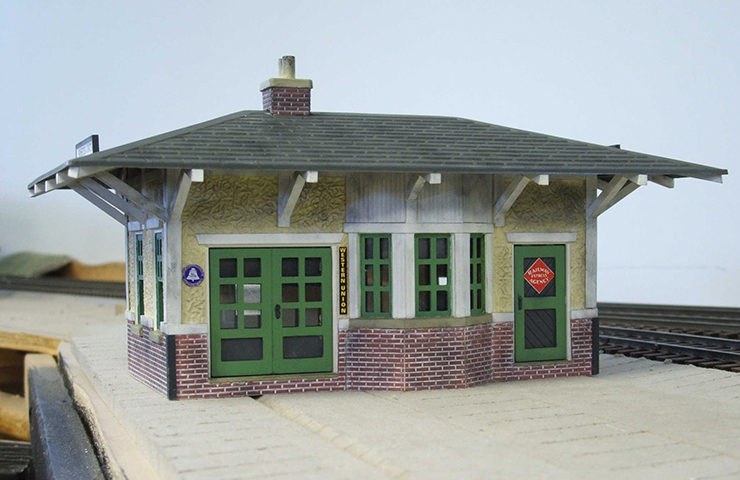
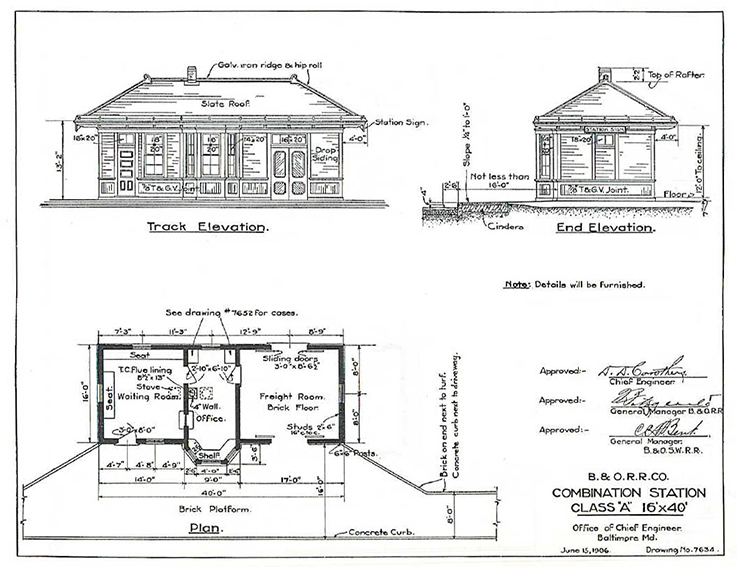 Of course, parent road B&O has a few things to say about where a station is to be set beside the tracks. Here are dimensions for a brick platform as well as its set back from the track. The Baltimore & New York Railway actually existed. Built by B&O in 1887 to link Cranford NJ with Staten Island, the B&NY as a company was dissolved in 1944. The property was ceded to the Staten Island Rapid Transit, a B&O subsidiary, which had operated the 5 ½ mile line since its opening in 1890.
Of course, parent road B&O has a few things to say about where a station is to be set beside the tracks. Here are dimensions for a brick platform as well as its set back from the track. The Baltimore & New York Railway actually existed. Built by B&O in 1887 to link Cranford NJ with Staten Island, the B&NY as a company was dissolved in 1944. The property was ceded to the Staten Island Rapid Transit, a B&O subsidiary, which had operated the 5 ½ mile line since its opening in 1890.
I adopted the B&NY name for my model railroad. The prototype B&NY had direct connections to the CNJ and through that with the Reading Company, as well as direct track connections with the Pennsylvania Railroad and the Lehigh Valley.
Truly a model railroader’s gold mine for the ability to logically run equipment from other railroads!
An early test fit of the station at its location on the layout.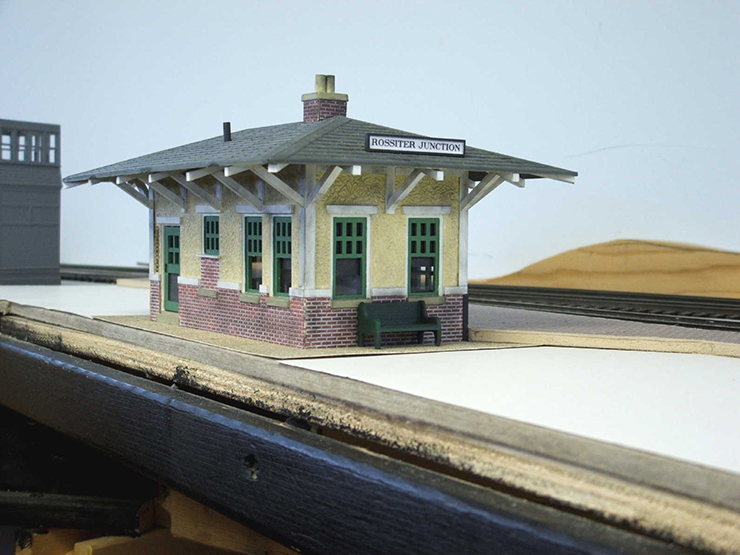 The platform is made with 1/8” thick foam core board with printed brick pattern paper for the paving. A 1/8” strip on all edges is painted a concrete color (artist’s acrylic “Linen”) for the curbing.
The platform is made with 1/8” thick foam core board with printed brick pattern paper for the paving. A 1/8” strip on all edges is painted a concrete color (artist’s acrylic “Linen”) for the curbing.
A sheet of index card stock was painted with a light tan texture paint for the concrete walk.
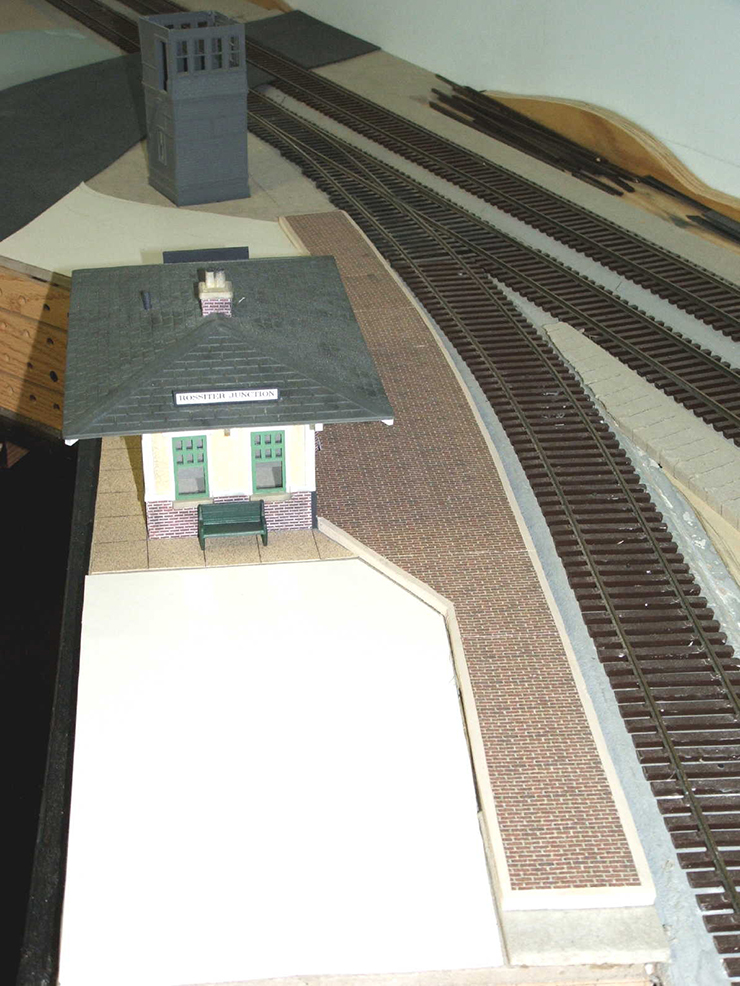 An overview of the station site, showing the brick platform and concrete walk.
An overview of the station site, showing the brick platform and concrete walk.
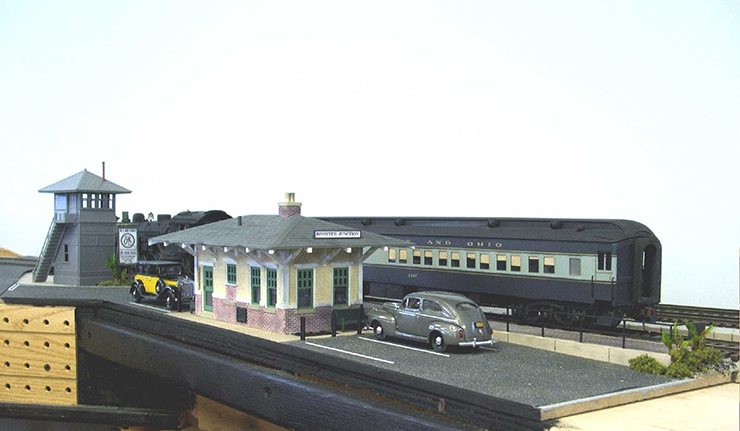 Black top paving has been added with parking space stripes. Also some pieces of rail as ‘bumpers’ in case one gets in too close. They can do quite an expensive number to the front end of any carelessly parked car!
Black top paving has been added with parking space stripes. Also some pieces of rail as ‘bumpers’ in case one gets in too close. They can do quite an expensive number to the front end of any carelessly parked car!
The black rectangle on the side of the station is a Majestic coal chute door. The black piece on the concrete walk is the door to the cellar, under the depot where a furnace is located.
The Plasticville switch tower in the background happens to be made to a B&O 1906 design.
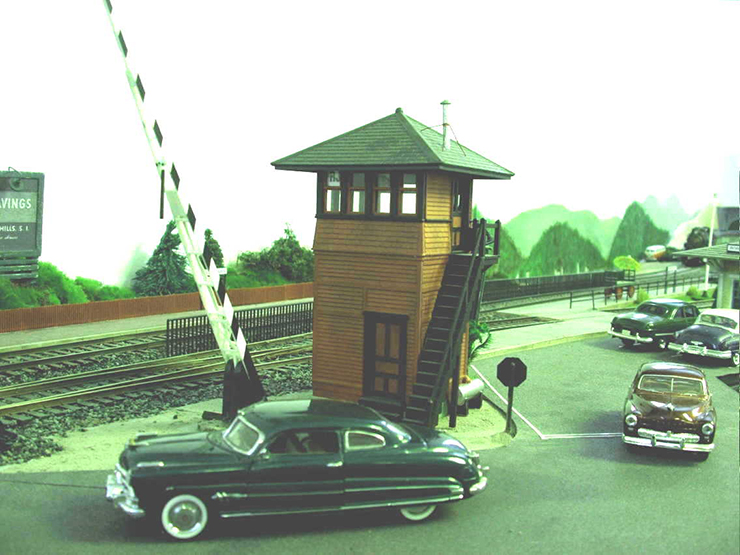 All the Plasticville tower needed was a B&O paint job (this one of Indian red with black trim was used from the 1920s to late 1940s). I added a fuel oil tank for heating. Easier to deal with than coal! Stays for the smoke jack and tower designation letter also ease it closer to scale appearance.
All the Plasticville tower needed was a B&O paint job (this one of Indian red with black trim was used from the 1920s to late 1940s). I added a fuel oil tank for heating. Easier to deal with than coal! Stays for the smoke jack and tower designation letter also ease it closer to scale appearance.
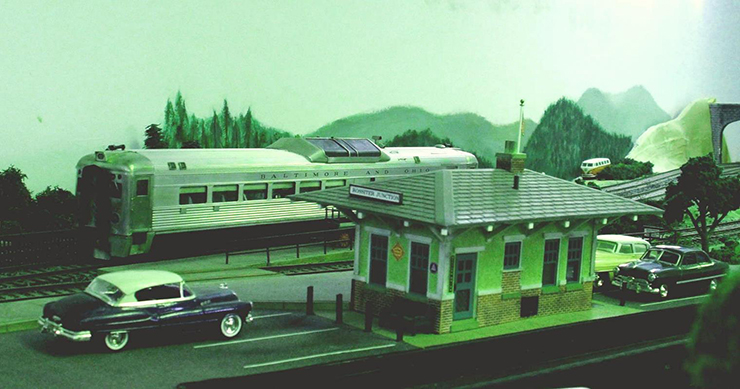 A B&O RDC-2 “Speedliner” departs Rossiter Junction on its way west along the Baltimore & New York Railway.
A B&O RDC-2 “Speedliner” departs Rossiter Junction on its way west along the Baltimore & New York Railway.
